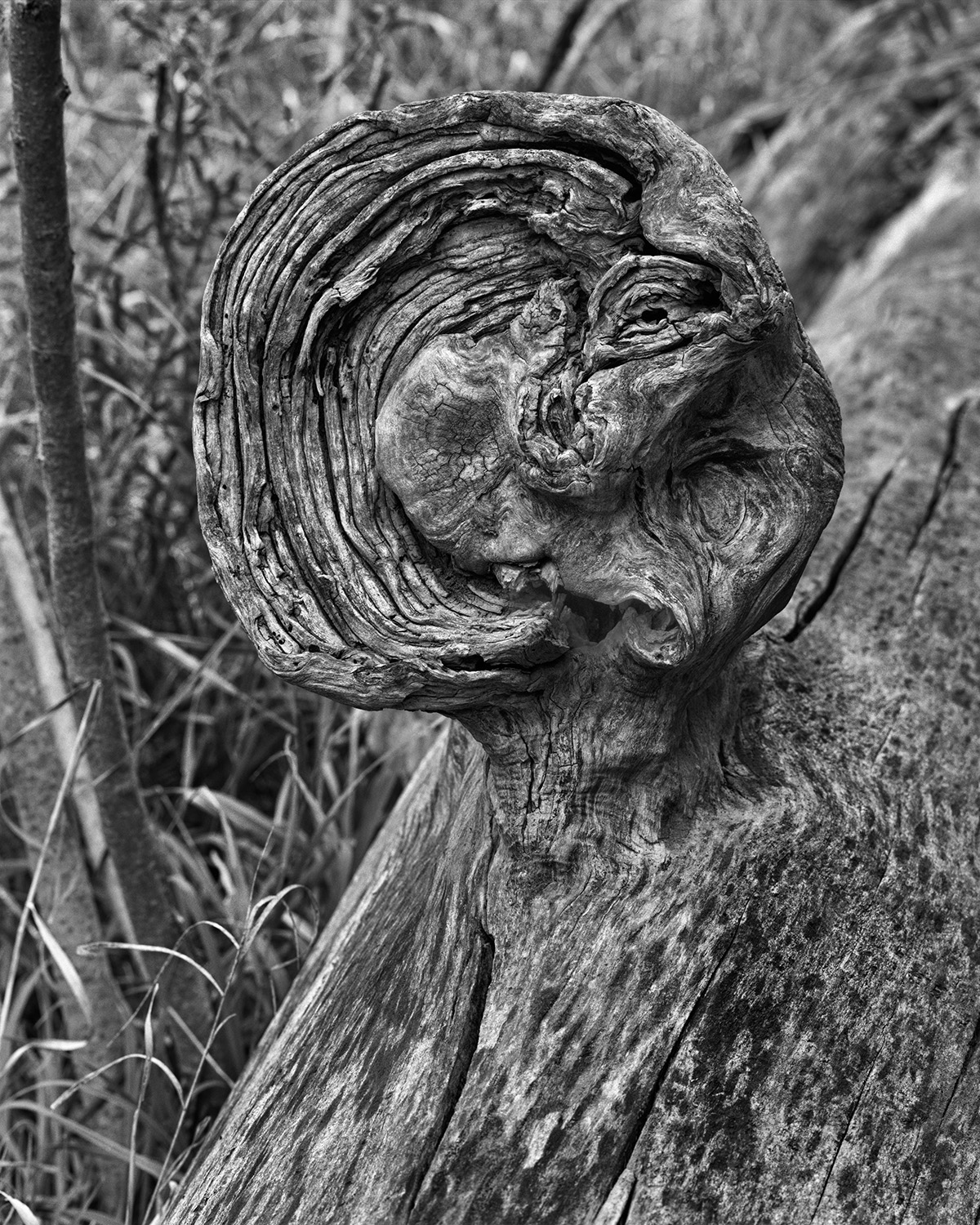INFINITY
About the photographs of Douglas M. Koch
by Philip D. Heying
2012

Water worn burl on fallen cottonwood, Kaw River, 1987
These photographs are militant. Here we are looking at things that are not human and not for sale. They do not promise us an easier life. While they convey a powerful sensuality, they are devoid of prurience. They speak in razor sharp fact, not comforting platitudes.
To observe Douglas M. Koch at work is a lesson in expansiveness. He might spend two hours in sweltering heat and swarming mosquitoes staring into a ditch, wrestling a 5” X 7” view camera into a configuration precise enough to capture a preposterous synchronicity of ”random” phenomena. He could care less about how uncool -even slightly demented- he might look to passers by. He’s in a crazy trance of amazement. He succeeds in passing evidence of the amazing to us, from outside our rushed, sensational habits, so we don’t have to suffer tedium, heat nor mosquitoes.
The things that amaze his attention exist, empirically. Yet, for anyone willing to open their minds to the content of the images, that sense of amazement is identical to mysticism. Why do there appear, to the mystery of our own minds, configurations so lyrical, so unique, in the grist of the most common ground, as to surpass anything we might really be able to imagine? To acknowledge such subject matter is to confidently embrace the necessity of humility. With neither microscope nor telescope, Koch’s photographs show us that we are inextricably included as a subset of infinity. It is not safe to assume, here, that a rock does not have some kind of mind as it is reflected in the mind of the observer. In this way the images are a lot of fun, because it is fun to be dazzled by magic. But this is no joke.
If we are included in all of this, which seems safe to assume, then we are connected. This is the militancy of Koch’s work. In a world (or cosmos) where everything is connected, it is not possible to be safe and happy in a dangerous, unhappy environment. It is not possible to isolate oneself behind the palace walls to hear an infinite refrain of courtesan flattery. The ethical implications are staggering. Everything and everybody deserves reverence, just like the hippies said. Only this time it’s urgent, articulate and sober.
It is an ironic quirk of history that beauty in art has become militant. If Dadaism was born in protest to subvert the aristocracy that created industrialized slaughter and put it into practice with World War I, Dada has now become the bastard flag of an even more unhinged aristocratic elite. The elephant in the room of the contemporary art market is the kitsch, cruel decadence of Damien Hirst’s diamond encrusted human skull replica titled “For the Love of God”. The gluttonous socio-economic mechanism that made Hirst’s work possible will lethally dismiss the beauty of Doug Koch’s photographs as “boring”, a rejection that puts everything at risk. Compare the brutality and squalor of the diamond mines that provided the raw material for Hirst’s skull with the bustling life force Koch celebrates with photographs. The perversion of values in the culture that collects work like Hirst’s, -to the tune of billions (trillions? gazillions?) of dollars per year- becomes glaringly apparent. It might be worse than a death wish. It might be a wish to exterminate everything.
For all the militant urgency and ethical implications of Koch’s work, it comes in the form of pure pleasure. It is packed with spectacular elegance, subtle wit, a sense of adventure, rigorous intelligence and the bedrock calm of a life’s commitment to craft. Really, there is no need for words. It’s a simple matter of taking the leap with open eyes and diving right in.
